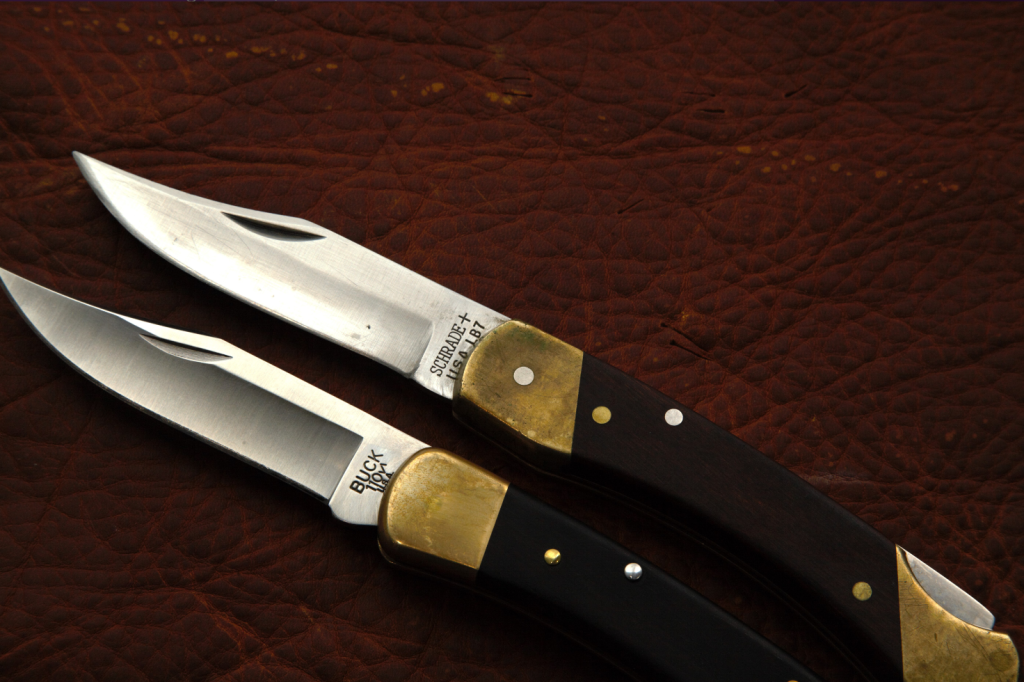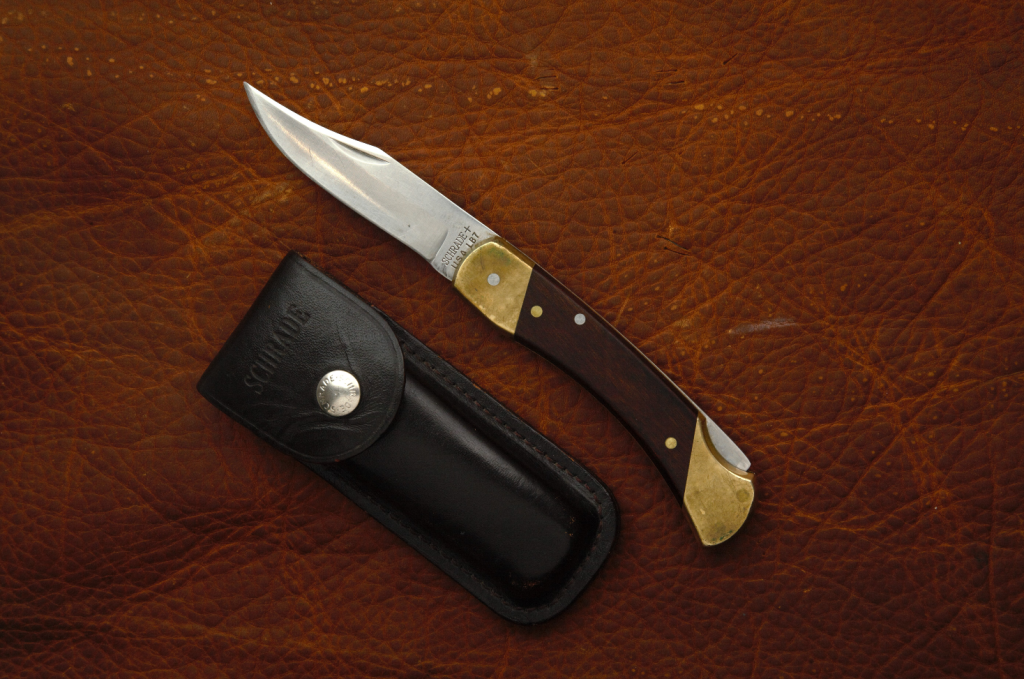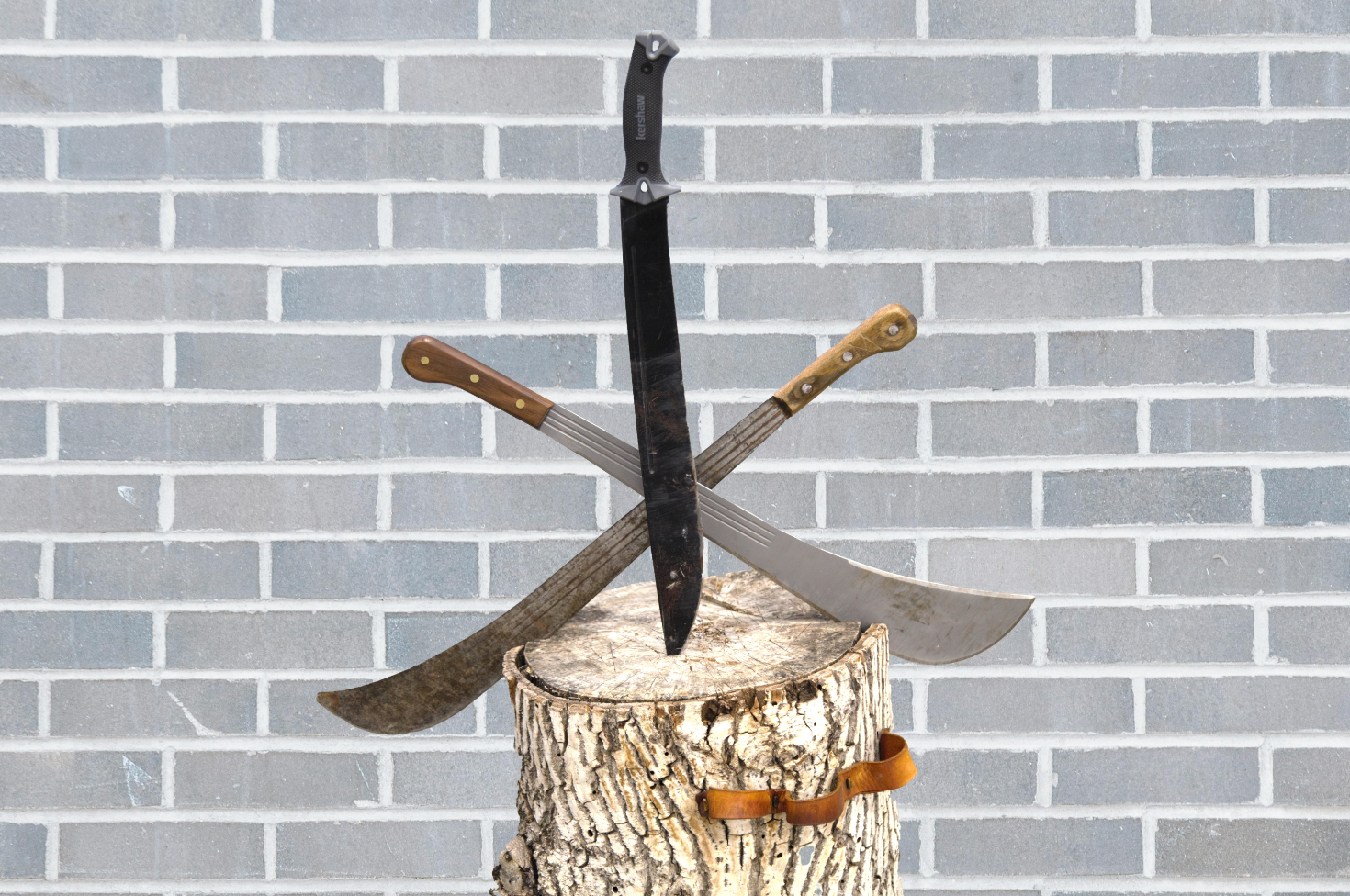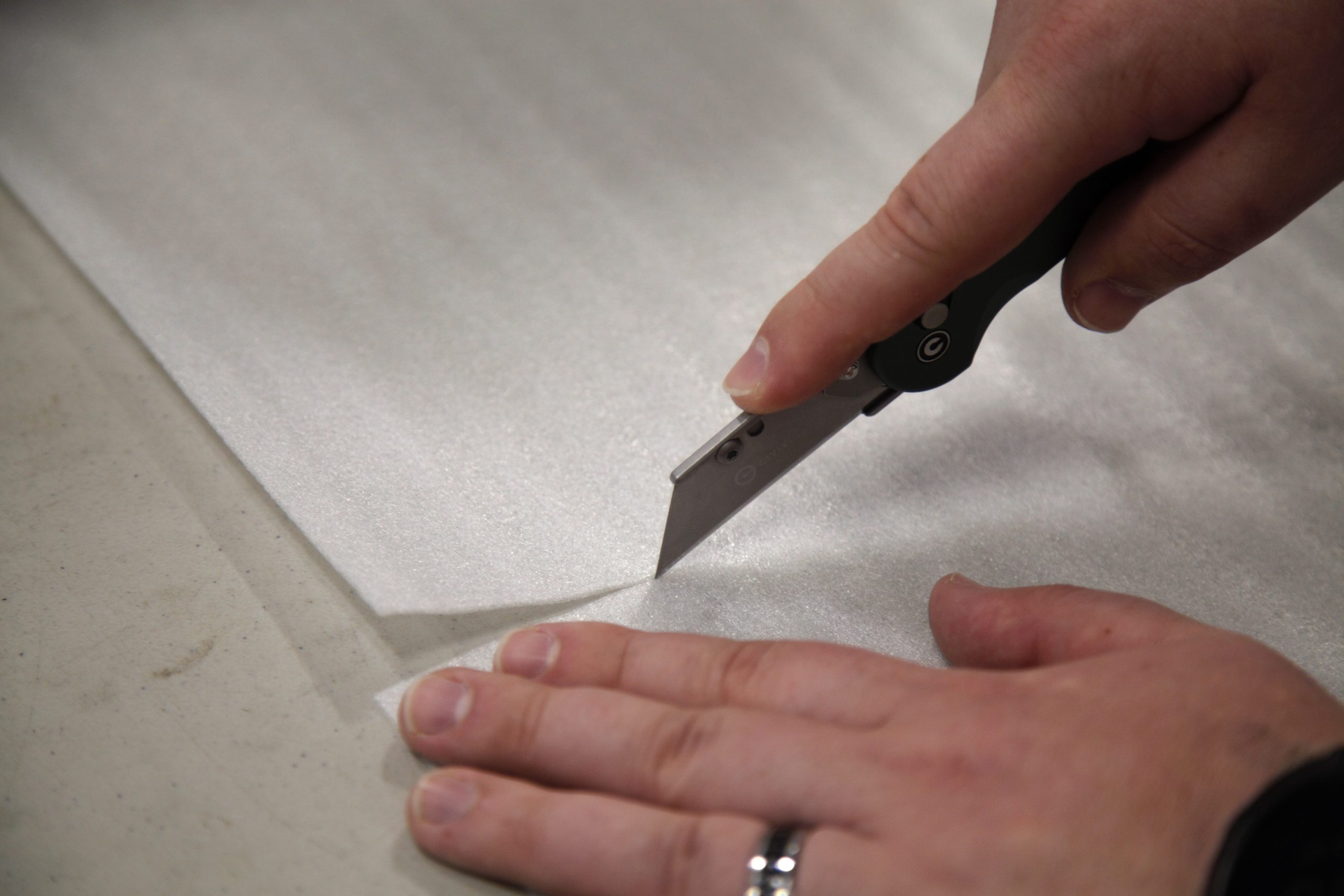
I’ve always loved knives. In hindsight, I probably would have troubled my teachers and classmates a lot less if I had kept that to myself, but I’m positively giddy about sharp and pointy things. Now that I’m an adult, people tend to get less scared and more curious about my obsession, and often they’re excited to tell me about their cool knives. My father-in-law is one such person, and an experience I once had with him illustrates the point I wish to make. He told me “I have a Buck Knife,” and then produced a 4-inch lockback folder with a clip point blade proudly emblazoned with a tang stamp that read “Schrade.”
What is a Buck Knife?

My father-in-law both lied to my face, and told a half-truth, I guess. Allow me to first explain how he lied.
Buck Knives is a brand, and he showed me a knife made by Schrade, a decidedly DIFFERENT brand. Thus, he lied when he said he had a Buck Knife. Get owned, Dad. Facts don’t care about your feelings.
But on the other hand, his claim was based on one of the most common misconceptions I’ve encountered in the knife world, and the older generations are to blame (sorry, nothing personal). As mentioned earlier, Buck Knives is a brand that was started by Hoyt Buck and his son Al. Hoyt had been making knives his entire life, but they were fixed blades. In 1964, shortly after incorporating, they released the Buck 110 Folding Hunter, and the knife industry changed forever.
That knife was the first hard-using folder that could do most of the work of a fixed blade. No longer did tradesmen need to carry a slip joint folder for most work and a fixed blade for when it got rough – the 110 did both jobs just fine. It was, and still is, incredibly popular, and as with most popular things, it got nicknamed. The name chosen – the “Buck Knife.” It is a Buck Knife, after all.
This meant that, as with most popular things, competition was coming soon, and oh boy did it come. Lockback folders started flowing out of every other knife company that was looking for a piece of the pie. This wave of lockbacks brought about some great tools – the Spyderco Endura, the Case Hammerhead, and yes, the Schrade Bear Paw, just to name a few. Somewhere along the way, a Schrade Bear Paw found its way into my father-in-law’s pocket, and it has served him well for decades.

But by the time these knives came out, the term “Buck Knife” had become almost generic, and many similar knives were called Buck Knives erroneously.
Why should you care?
At this point, the angry old guy in my brain is shouting at me. “Now you listen here, you darn skippy. Mr. Buck ought to feel honored that his name is now associated with quality cutlery. I will not change years of tradition just to satisfy your juvenile need to disrespect your elders” he says. “I have half a mind to bend you over my knee and teach your backside a lesson!”
Man, I’m glad that guy only lives in my head.
This is a fair point, but hear me out: trademark.
“Trademark?” he screams. “Isn’t that one of those silly things those ninny lawyers came up to con good folks out of their hard-earned wages? What’s wrong with kids these days? I miss Ronald Reagan. There was a man…”

I don’t know nearly enough about trademark law to comment on its “ninny lawyer” origins, but I do know this: genericization can get your trademark taken away. Have you ever heard of aspirin, dry ice, escalators, and trampolines? These popular products once had trademarked names, but their names were declared generic becuase competition used their names for long enough without any resistance. That’s why Velcro made this video, they don’t want to lose their circled R.
So, my angry old imaginary friend, how do you think Mr. Buck would feel if his brand were taken from him in court, and every lockback folder were allowed to call itself a Buck Knife? It wouldn’t just be some product, it would be his noble surname taken from him. He would be shattered, and there would be nothing he could do to fix it.
So what?

This is what I ask of you: if you have a real Buck Knife, proudly call it one. The Buck name earned a reputation for heirloom-quality products, and they are worth carrying. If you have a similar knife from a different company, proudly use its brand name! In 1905, George Schrade invented a switchblade with the world’s first Button Lock; his brand is worth bragging about too. W.R. Case was a visionary man who helped create the production knife industry as we know it. Sal and Gail Glesser started Spyderco in a van and turned into a true cutlery superpower. Each of these brands makes a high-quality hard-working lockback, and they deserve credit for it.
With that, my knife rant is over. Now, I’m off to pick up a Buck 110 for my father-in-law. That way, if he meets another knife nerd and claims to have a Buck Knife, he’ll be telling the truth!



